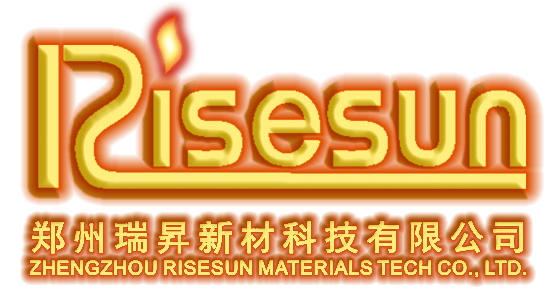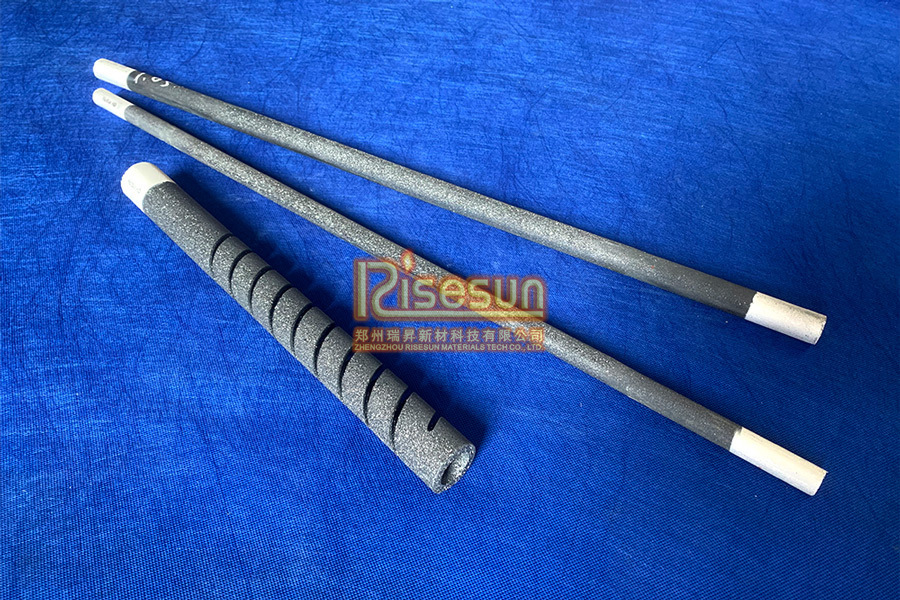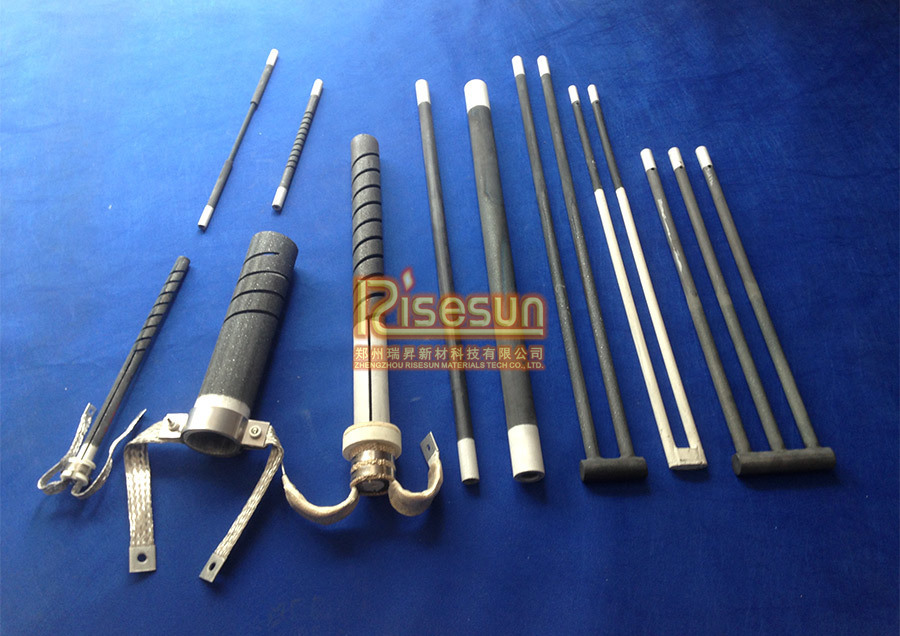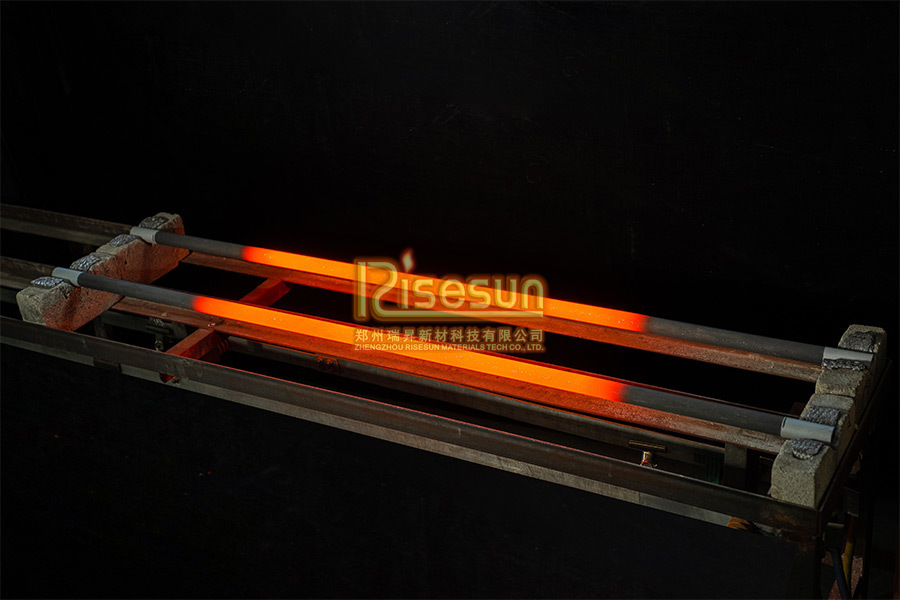Hotbar SiC heating elements - SiC resistance heating elements
Hotbar® SiC heating elements are manufactured to rod or tube form by recrystallization process under high temperature after extrusion forming with high purity alpha silicon carbide raw materials.
Classification:
Key words:
Hotbar® SiC heating elements are manufactured to rod or tube form by recrystallization process under high temperature after extrusion forming with high purity alpha silicon carbide raw materials. Hotbar® SiC heating elements having special character for applications in industry and lab, which have the better service life under various working conditions, especially for oxidation and/ or corrosive atmosphere. Hotbar® SiC elements may be mounted either vertically or horizontally at the max. operation temperature 1600℃ without any special supporting, the elements will not be deformed, which provides a flexible furnace design, furthermore, the elements can be replaced while furnace is working continuously. Its high loading capacity is more suitable for low-volume and high-power conditions. Therefore, Hotbar® SiC heating elements are widely used in various high temperature electric furnaces and other electric heating devices, such as industrial applications involving anode and cathode materials for lithium batteries, magnet, ceramics, powder metallurgy, glass, metallurgy and machinery.
We utilize advanced production processes and technologies. Hot zone and cold ends are connected by special SiC binding materials, and then treat the welded section with a second siliconization process at high temperature, which will improve the strength of the welding part greatly. Meanwhile, the resistance of the hot zone is much higher than that of cold end, so these elements are high-efficiency and energy-saving, with an excellent resistance ratio.
Temperature of Hotbar® SiC elements is up to 1,600℃ in dry and clean air, but which will be restricted by some other gases such as nitrogen, ammonia,hydrogen and so on.
|
Item |
Unit |
Model |
|
|
|
|
RH & RL |
Hotbar® HD |
|
Density |
g/cm3 |
2.5 |
2.65 |
|
Porosity |
% |
23 |
18 |
|
Rupture strength |
MPa (25℃) |
50 |
60 |
|
Thermal conductivity |
W/m·℃ (1000℃) |
14~19 |
14~19 |
|
Specific heat |
kj/kg·℃ (25~1300℃) |
1.0 |
1.0 |
|
Coefficient of linear expansion |
(1000 ℃) × 10-6 |
4.5 |
4.5 |
Chemical properties
Heating elements are oxidized in the air up to 800°C, a layer of SiO2 protective film is formed on the surface of the hot zone at 1,000-1,300°C, and cristobalite will be crystallized at 1,300°C. The protective film will get to a certain thickness at 1,500°C to slow down oxidization. If the temperature exceeded more than 1,627°C, the protective film will be destroyed, leading to a significant increase in the oxidization rate and elements will be premature damaged prematurely.
Although the heating elements are oxidized very slow during use, their resistance may increase in long-term use, which is known as “ageing”. To reduce the “ageing” speed, we provide the heating elements with different protective coatings to extend their service life under special conditions.
Electrical properties of elements
Hotbar is a semiconductor, which has a much higher resistance value than metal conductors, heating in air, when the surface temperature of the hot zonereaches about 1000℃, its resistivity is 600~1400Ω · mm2 /m. The characteristic curve of Hotbar resistance is negative from room temperature to 700℃, it is a positive value above 700℃. The resistance value is lowest at about 650℃, exceed this temperature, the value will increase proportionally to temperature. Below 650℃, minor impurities will cause resistance value to change substantially, so the resistance value at room temperature of it will be times of that at 1000℃. So the resistance value always is tested at steady temperature 1000℃ or above, and calculate it with voltage and current tested.
The resistance of all SiC heating elements increases over time. When it grows to 3 times of the initial value, the heating elements will be regarded as the end of life. The service life is functionally over when the resistance increase 3 times compared to the original. The factors which affect the service life are the following:
●Working temperature
● Surface loading (W/cm2)
● Furnace atmosphere
● Operating mode (continuous or intermittent)
● Materials to be sintered and harmful substance from them
● Circuit connection method
● Temperature control mode
● Use habits
Hotbar® heating elements usually have a long service life in the clean oxidizing atmosphere at 1,400°C. For the optimal life, the surface loading should be minimized in the furnace design, and 3-8W/cm2 is recommended.
Recommend Products
Online consultation
Please fill out the form below. We will contact you as soon as possible.





